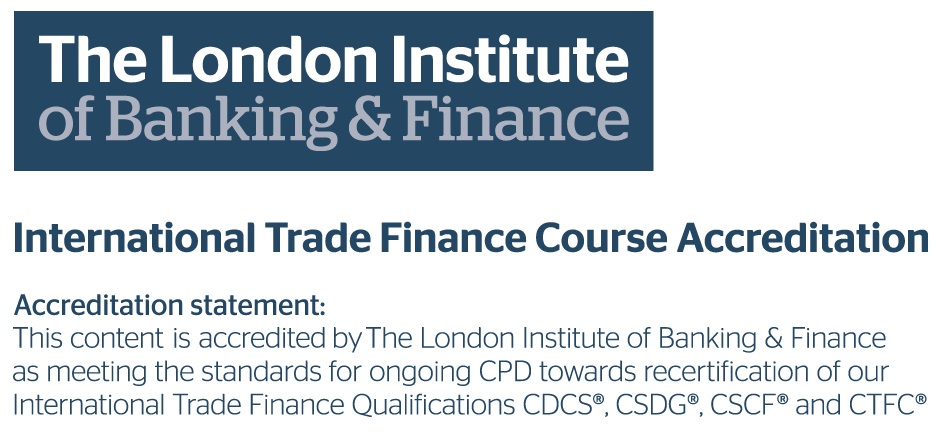Listen to this podcast on Spotify, Apple Podcasts, Podbean, Podtail, ListenNotes, TuneIn
Digital is all the rage right now in the trade space. Emerging technologies from AI to IoT to blockchain are promising to revolutionise global trade.
The hype is real.
However, there are a few blips on the radar: in a lot of jurisdictions, digital instruments are still not legally able to replace their paper predecessors.
This creates a lot of hesitancy among firms that are considering implementing digital processes.
Another issue is fragmentation with digital trade tools being built using different standards.
In such a highly interconnected ecosystem, different standards will impede key stakeholders from effectively communicating with one another.
The UK Centre for Digital Trade & Innovation (C4DTI) has also highlighted these concerns, pointing out that the trade finance system is unnecessarily costly, complex, and slow.
These are all traits that reduce SME access to trade finance.
Fortunately, there are several organisations and initiatives that are working to combat this.
One of which has led to the creation of the Uniform Rules for Digital Trade Transactions (URDTT).
TFG’s Deepesh Patel sat down with David Meynell, digital rules advisor to the C4DTI, to discuss the URDTT, how they can best be implemented, and the impact they will have on digital trade.
Uniform Rules for Digital Trade Transactions
In 2019, the ICC Banking Commission Executive Committee provided the ICC Working Group on Digitalisation in Trade Finance with a mandate to proceed with the drafting of a new set of rules.
The result was the URDTT.
The rules are designed to be agnostic regarding underlying technology and address the gaps in digital trade while focusing on the use of data in digital trade transactions.
Version 1.0 of the URDTT came into effect on 1 October 2021.
Digital trade instruments take many forms.
Bills of exchange, promissory notes, bills of lading, and occasionally even warehouse receipts can fall within this category and fit perfectly within the framework of the URDTT.
These instruments have three key traits. They are:
- Irrevocable,
- Unconditional, and
- Autonomous to the underlying contract.
“A digital trade transaction is a process, as agreed between the buyer and the seller, whereby electronic records are used to evidence the underlying sale and purchase of goods or services, and the incurring of a payment obligation,” Meynell said.
“To be subject to the rules, a digital trade transaction must specifically state so, and it should satisfactorily reflect the underlying commercial contract.”

Benefits of the URDTT
The primary benefit of the URDTT is their focus on a digital environment, which encourages participants to submit and share information virtually.
As with all ICC rules, the URDTT are independent and neutral, providing a collective understanding of terms and definitions.
As a result, the rules will help limit repetition within ‘platform’ rulebooks, encouraging standardisation and promoting the use of electronic records in the industry.
Another significant benefit is that the rules align with the Framework for G7 collaboration on Electronic Transferable Records.
This will help promote the adoption of legal frameworks compatible with the UNCITRAL Model Law on Electronic Transferable Records (MLETR).
MLETR is expected to drive changes that will allow for the legal possession of digital negotiable instruments.
The URDTT are also compatible with the proposed legislative changes regarding the use of possessable electronic trade documents as set in the UK Law Commission recommendations.
URDTT preparation for practitioners
To effectively implement the URDTT, practitioners should focus their preparations on technology, legal, risk mitigation, and operations.
Technology. Practitioners must ensure that internal data processing systems can handle the relevant formats for electronic documents, authenticate messages, and execute electronic signatures.
Legal. No known conflict exists between the URDTT and any eCommerce laws globally, but practitioners should work with their banks to review internal client agreements.
Risk mitigation. While most internal policies already cater for digitalisation, practitioners should also review handling guidelines to account for changes in procession practices and address any other risks necessary for transaction processing.
Operations. The operational aspects are the most intricate, but the URDTT Implementation Guide provides in-depth information.

The role of banks with the URDTT
The URDTT outlines the three primary roles that financial services providers hold; namely, providing financing or risk mitigation services, effecting payment, and adding a payment undertaking to a buyer’s payment obligation
Financial services providers must ensure that internal data processing systems are able to handle the relevant formats for electronic records, authenticate messages, and execute electronic signatures.
At a minimum, a data processing system must be able to process the relevant data and maintain adequate standards.
The future of the URDTT
The URDTT have been published as Version 1.0.
This use of version numbers allows for shorter revisions of the rules to be easily implemented as and when the need arises.
This suggests that the rules will not be static and, more importantly, can be revised far more quickly than has been the norm in the past.
The result will be a faster reaction to new market trends and changes in customs practice.
The ICC working group will also be working towards generating more output for the URDTT by identifying internal and external barriers to implementation, highlighting the benefits for the parties involved, creating use cases, and delivering a wide-reaching awareness campaign.
With the URDTT in play, hopefully, we are one step closer to a digital reality for the global trade environment.



































